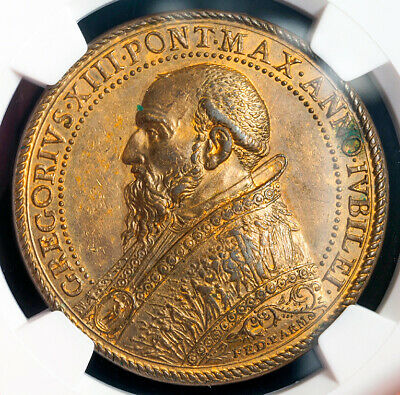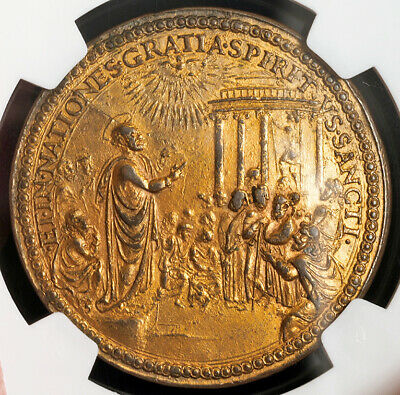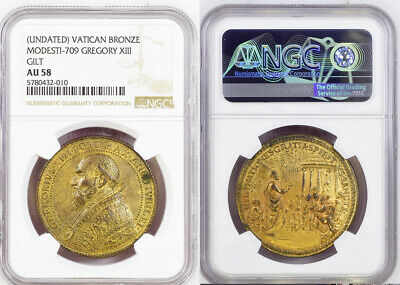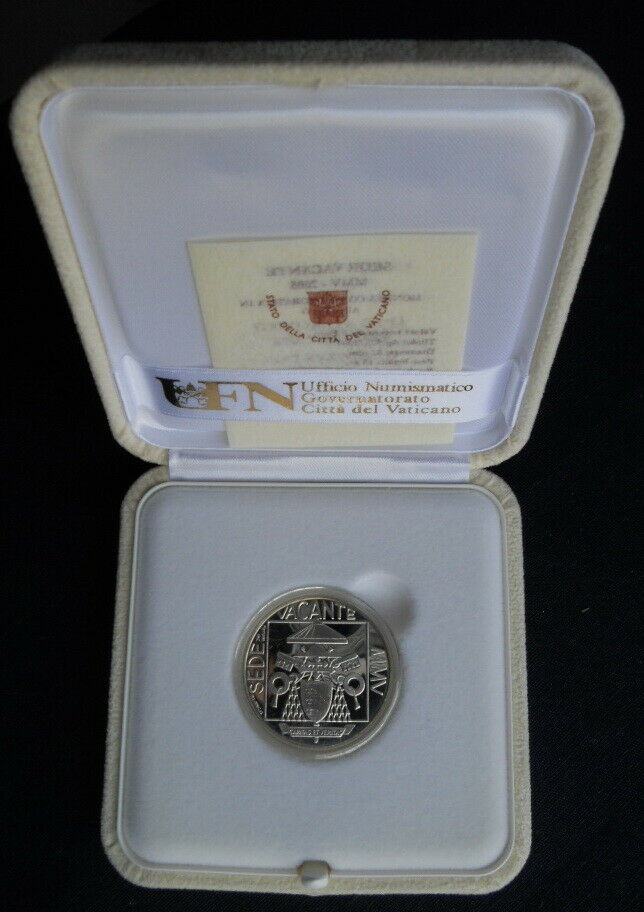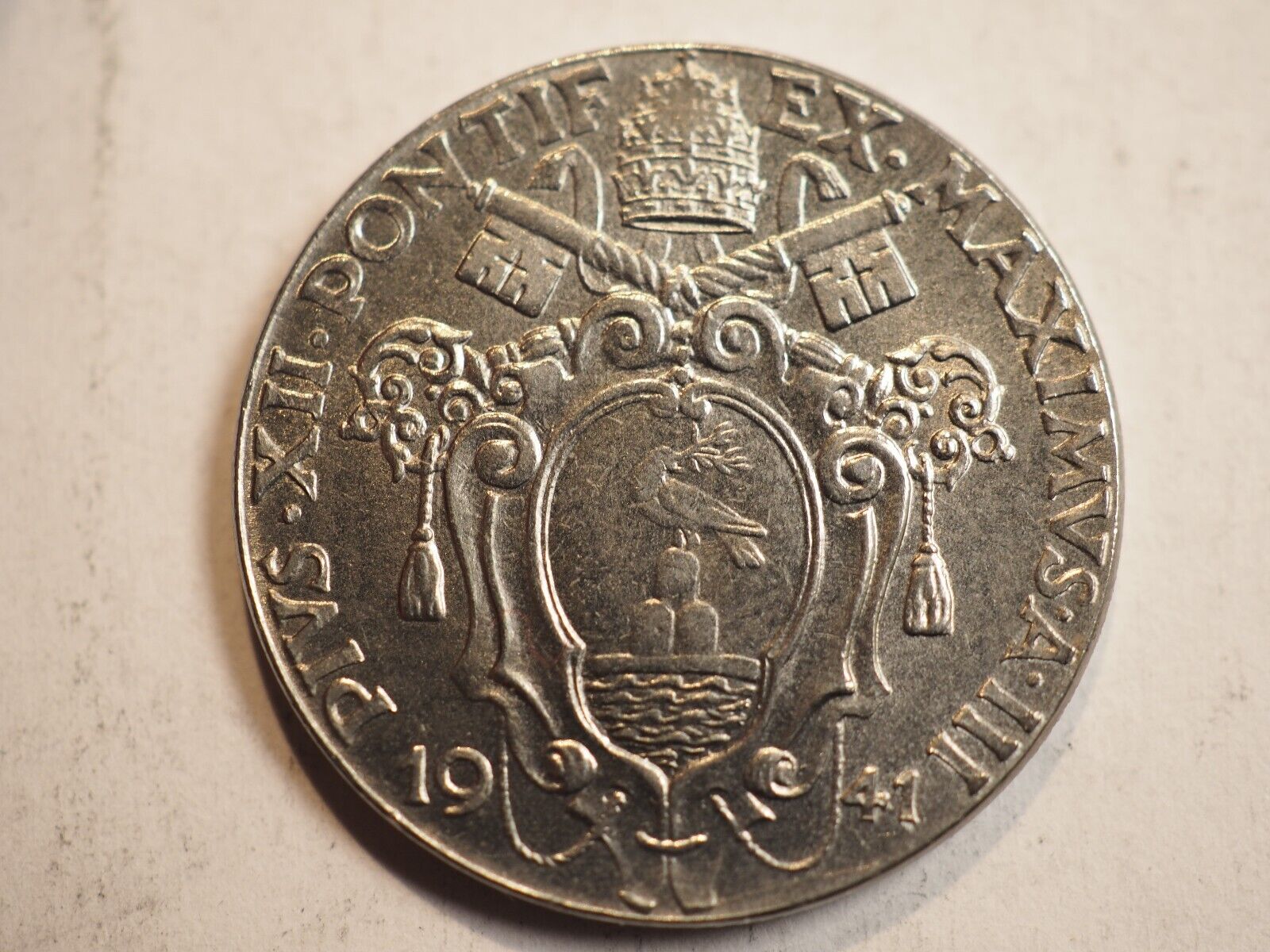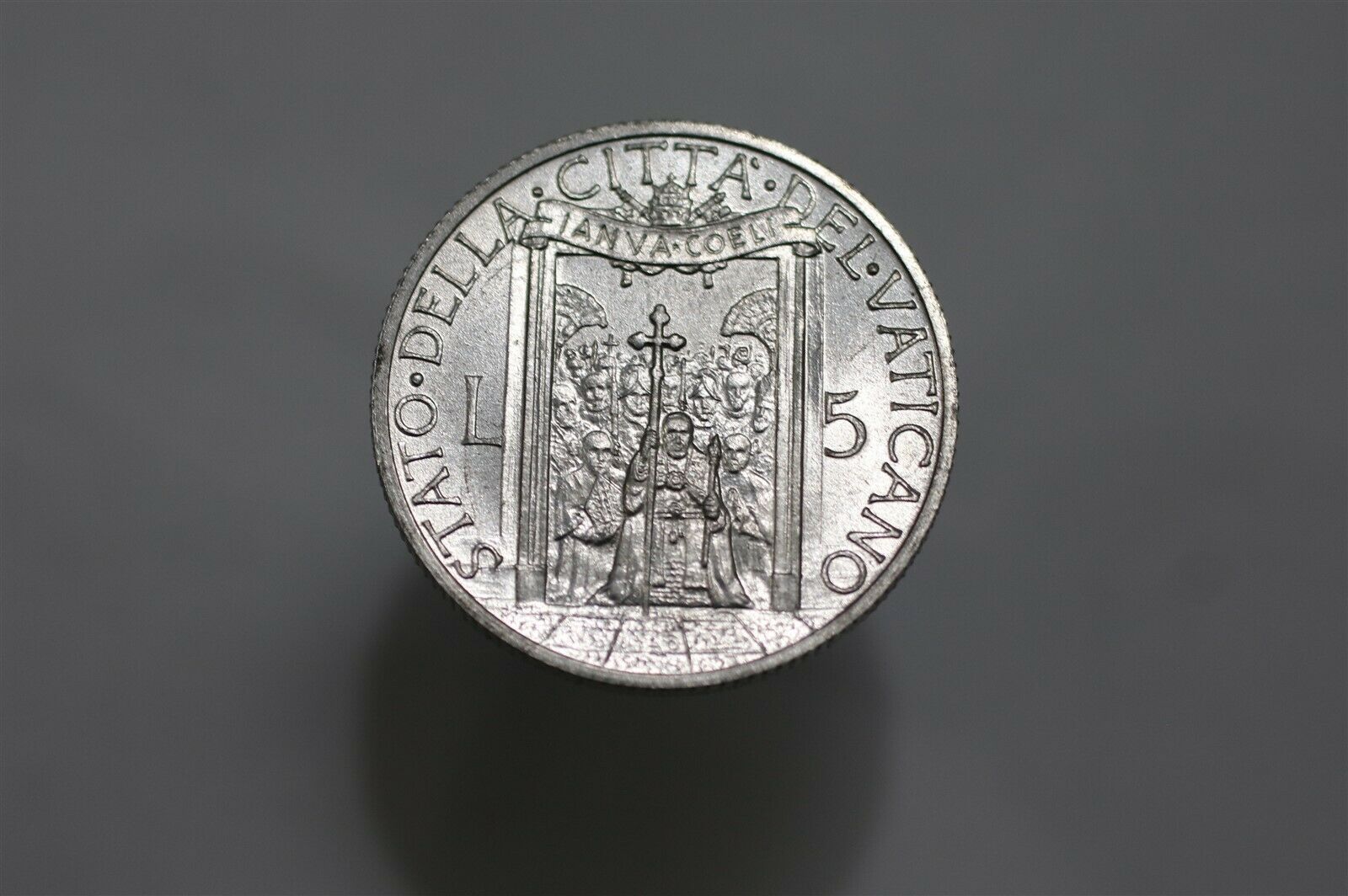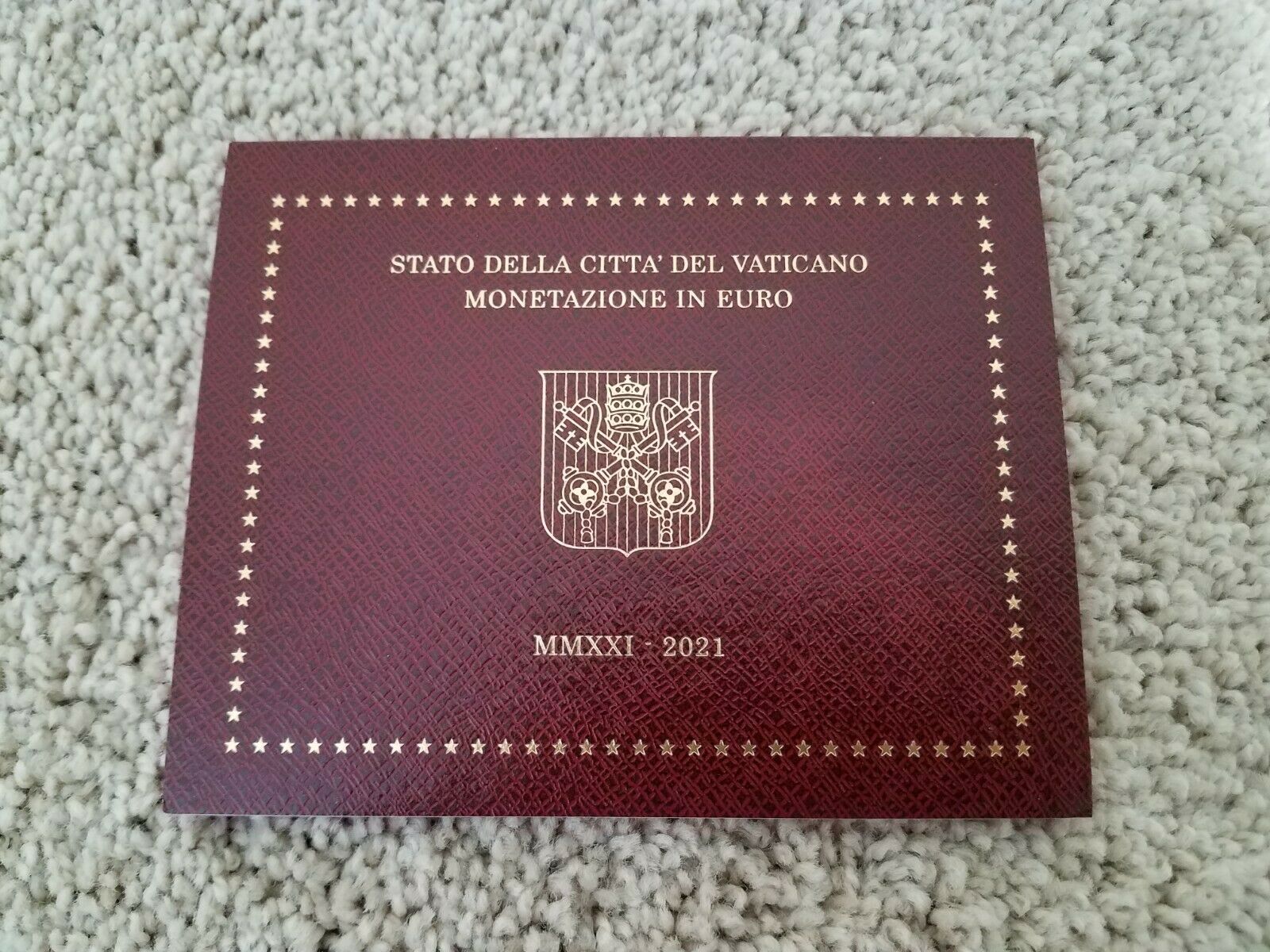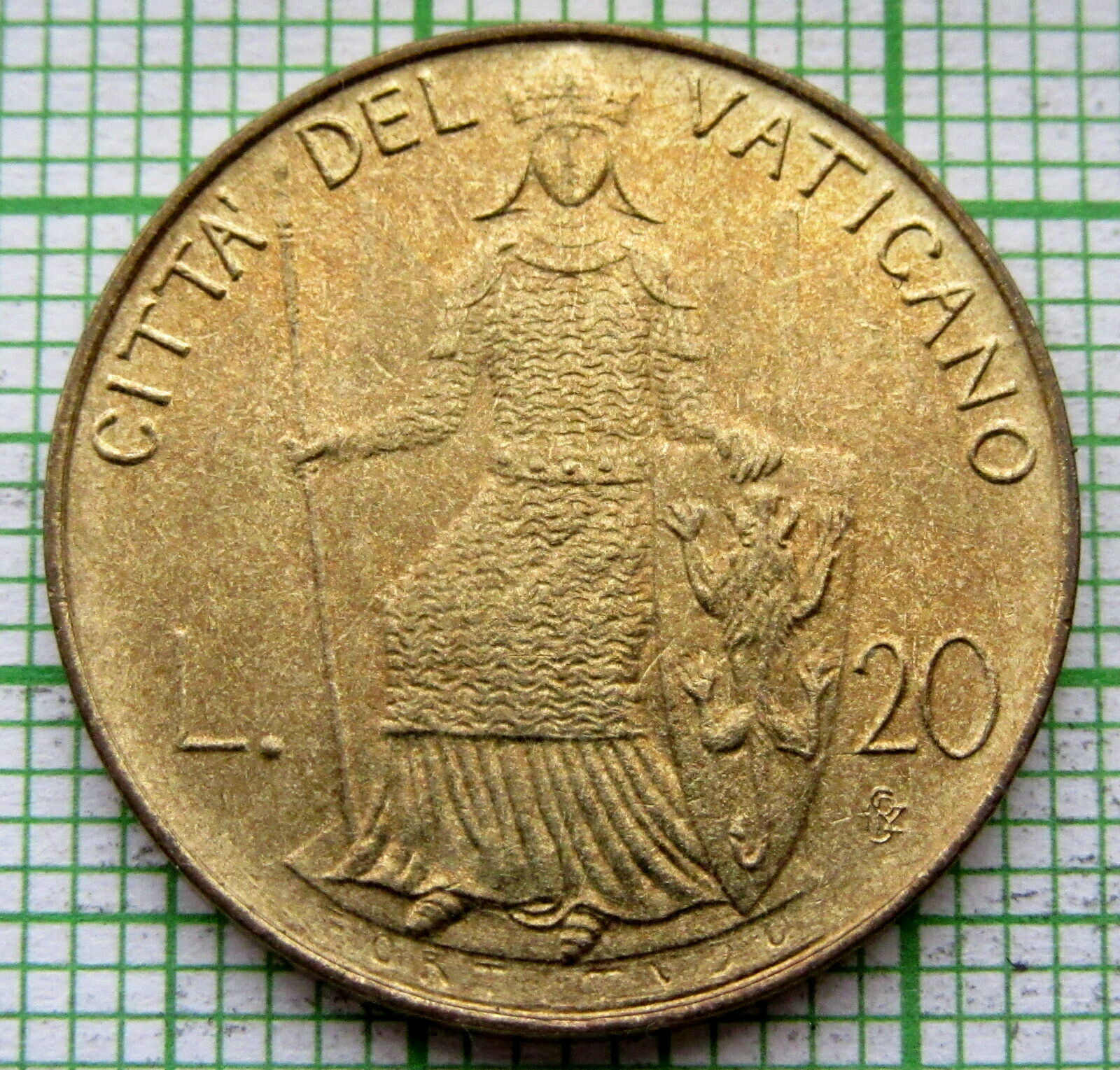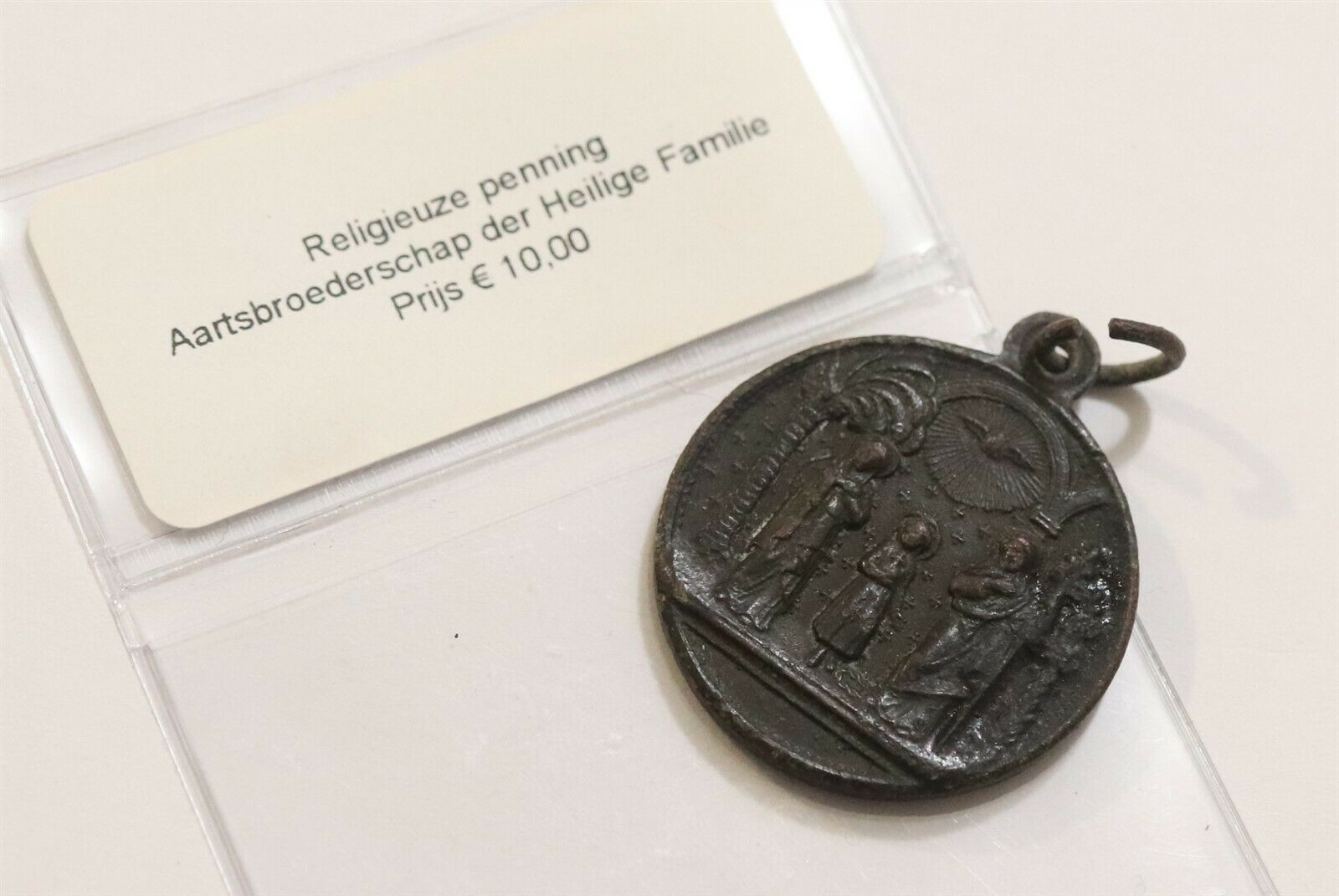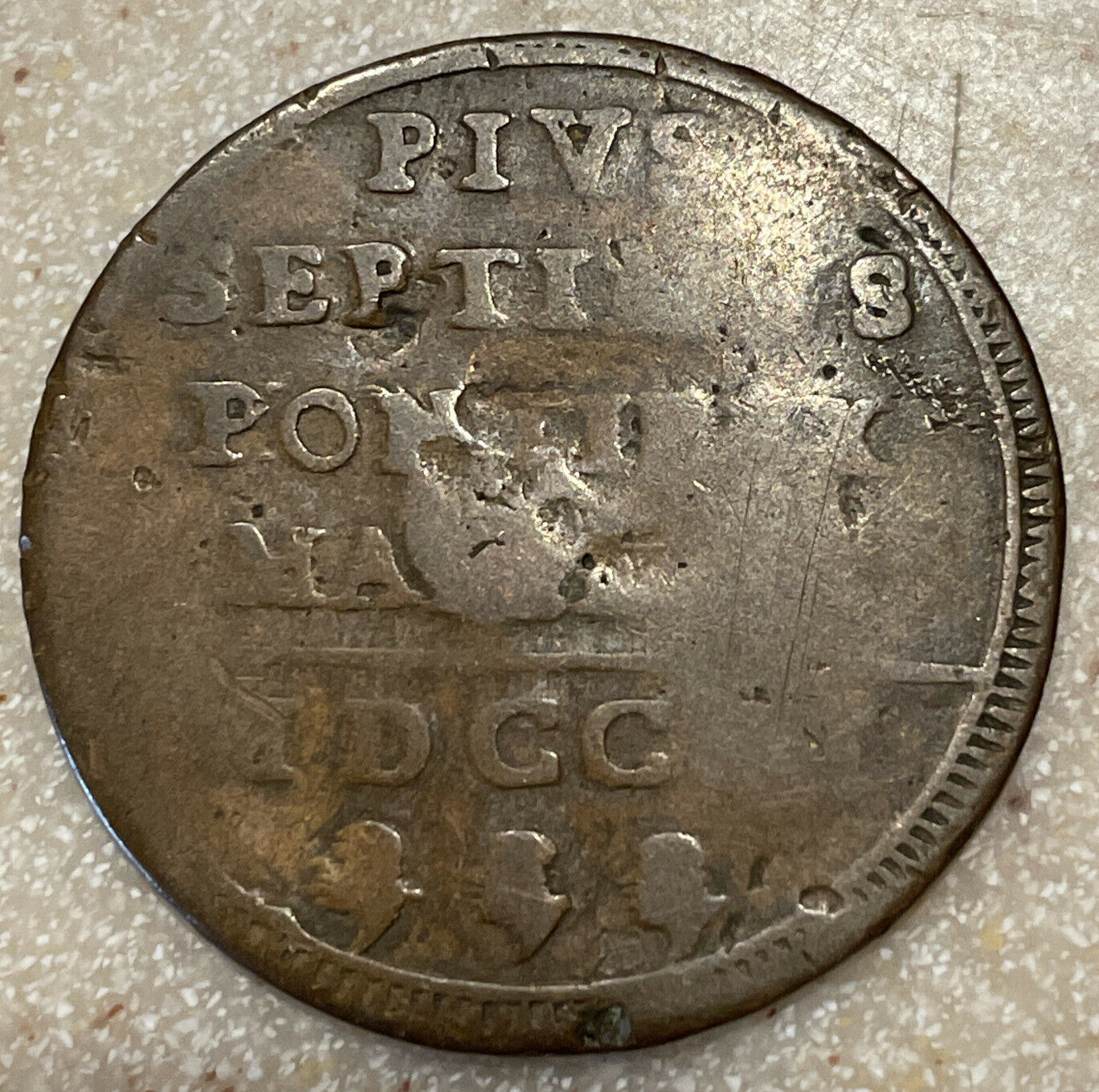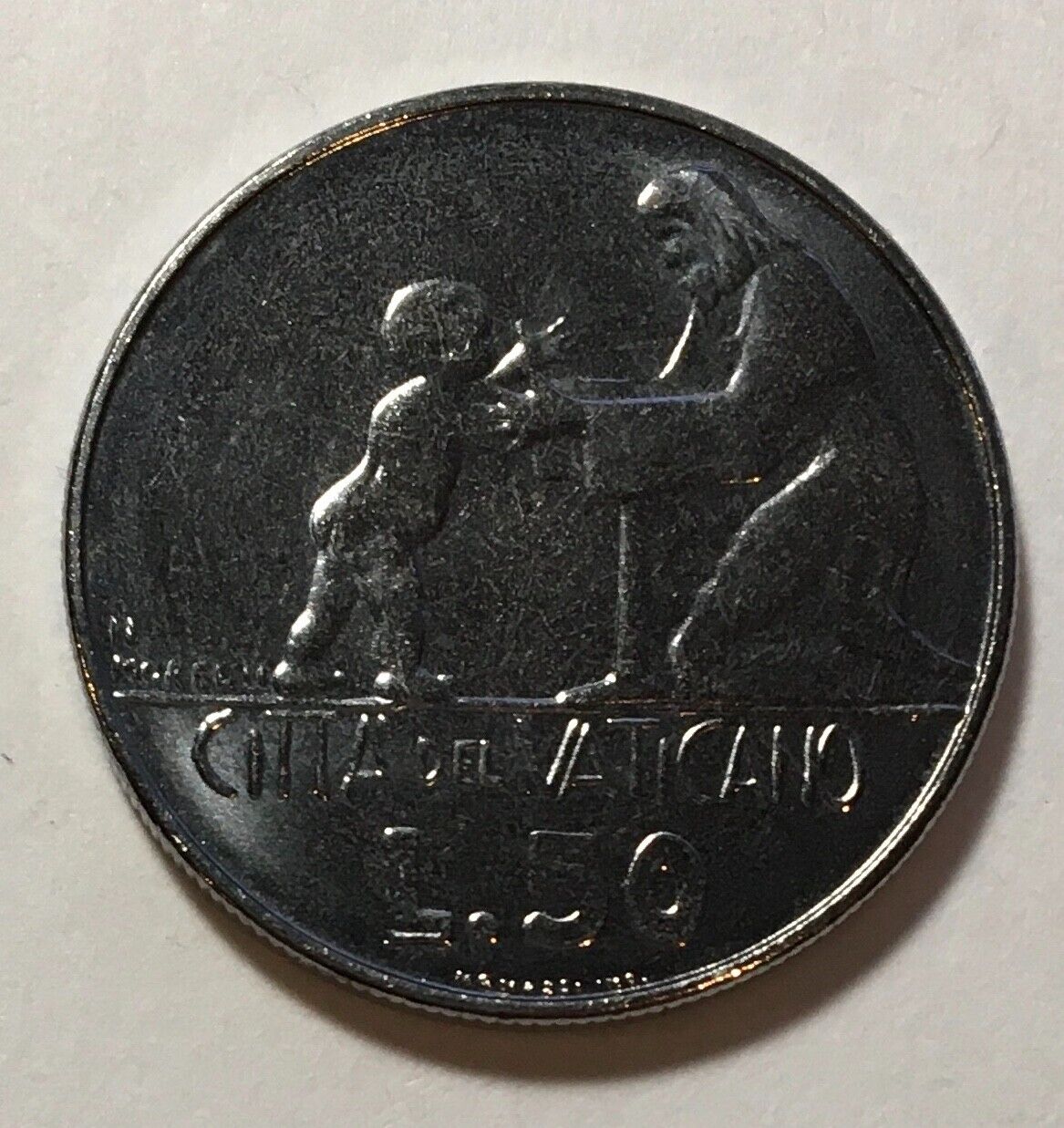-40%
1583, Vatican, Gregory XIII. "St. Peter & Temple of Jerusalem" Medal. NGC AU-58!
$ 116.23
- Description
- Size Guide
Description
CoinWorldTV1583, Vatican, Pope Gregory XIII. Bronze "St. Peter & Temple of Jerusalem" Medal. NGC AU-58!
Mint Year: dated 1583
Reference: Modesti 709.
Medallists: L. Fragni & G. A. De Rossi
Condition:
Certified and graded by NGC as XF-45!
Denomination: Medal -
The works of the Pope in Favor of the Missions during 1583 / St. Peter before the Temple of Jerusalem.
Material: Bronze (gold plated)
Diameter: 37mm
Weight: 27gm
Obverse:
Bust of Pope Gregory XIII, wearing embroidered cope. Medallist´s signature (FED. PARM) below arm truncation.
Legend: GREGORIVS . XIII . PONT . MAX . ANNO . IVBILEI .
Reverse:
St. Peter before the temple of Jerusalem.
Legend: . ET . IN . NATIONES . GRATIA . SPIRIT . VS . SANCTI .
At the end of Milutin's life Serbia was second in strength in Southeast Europe after Hungary. During his reign many court ceremonials were taken over from the Byzantine court and Byzantine culture overflowed into Serbia. After his death a short civil war followed, after which the Serbian throne was ascended by his eldest son, Stefan Dečanski. Stefan Milutin is mentioned in the Dante Alighieri's narrative poem Divine Comedy with the characteristics of counterfeiters due to the copying of Venetian money. He is included in The 100 most prominent Serbs.
In Eastern Christianity, the most widely used Christogram is a four-letter abbreviation,
ΙϹ ΧϹ
— a traditional abbreviation of the Greek words for "Jesus Christ" (i.e., the first and last letters of each of the words
"ΙΗϹΟΥϹ ΧΡΙϹΤΟϹ
, with the lunate sigma "Ϲ" common in medieval Greek), and written with titlo (diacritic) denoting scribal abbreviation (
І҃С Х҃С
). On icons, this Christogram may be split: "ΙϹ" on the left of the image and "ΧϹ" on the right. It is sometimes rendered as "ΙϹ ΧϹ ΝΙΚΑ", meaning "Jesus Christ Conquers." "ΙϹΧϹ" may also be seen inscribed on the Ichthys. In the traditional icon of Christ Pantokrator, Christ's right hand is shown in a pose where his fingers bend and cross to form the letters ΙϹ, Χ, and Ϲ.
Authenticity unconditionally guaranteed.
Bid with confidence!
Pope Gregory XIII
(Latin:
Gregorius XIII
; 7 January 1502 – 10 April 1585), born
Ugo Boncompagni
, was head of the Catholic Church and ruler of the Papal States from 13 May 1572 to his death in 1585. He is best known for commissioning and being the namesake for the Gregorian calendar, which remains the internationally accepted civil calendar to this day.
Ugo Boncompagni was born the son of Cristoforo Boncompagni (10 July 1470 – 1546) and of his wife Angela Marescalchi in Bologna, where he studied law and graduated in 1530. He later taught jurisprudence for some years, and his students included notable figures such as Cardinals Alexander Farnese, Reginald Pole and Charles Borromeo. He had an illegitimate son after an affair with Maddalena Fulchini, Giacomo Boncompagni, but before he took holy orders.
At the age of thirty-six he was summoned to Rome by Pope Paul III (1534–1549), under whom he held successive appointments as first judge of the capital, abbreviator, and vice-chancellor of the Campagna e Marittima. Pope Paul IV (1555–1559) attached him as
datarius
to the suite of Cardinal Carlo Carafa, Pope Pius IV (1559–1565) made him Cardinal-Priest of
San Sisto Vecchio
and sent him to the Council of Trent.
He also served as a legate to Philip II of Spain (1556–1598), being sent by the Pope to investigate the Cardinal of Toledo. He formed a lasting and close relationship with the Spanish King, which aided his foreign policy aims as Pope.
Upon the death of Pope Pius V (1566–1572), the conclave chose Cardinal Boncompagni, who assumed the name of Gregory XIII in homage to Gregory the Great, a 6th-century reforming pope. It was a very brief conclave, lasting less than 24 hours. Many historians have attributed this to the influence and backing of the Spanish king. Cardinal Borromeo and the cardinals wishing reform accepted Boncompagni's candidature and so supported him in the conclave while the Spanish faction also deemed him acceptable due to his success as a nuncio in Spain.
Gregory XIII's character seemed to be perfect for the needs of the church at the time[
clarification needed
]. Additionally, his legal brilliance and management abilities meant that he was able to respond and deal with major problems quickly and decisively, although not always successfully.
Once in the chair of Saint Peter, Gregory XIII dedicated himself to reform of the Catholic Church. He implemented the recommendations of the Council of Trent. He mandated that cardinals reside in their sees without exception, and designated a committee to update the Index of Forbidden Books. Gregory XIII was also the patron of a new and greatly improved edition of the
Corpus juris canonici
. In a time of considerable centralisation of power, Gregory XIII abolished the Cardinals Consistories, replacing them with Colleges, and appointing specific tasks for these colleges to work on. He was renowned for fierce independence; some confidants noted that he neither welcomed interventions nor sought advice. The power of the papacy increased under him, whereas the influence and power of the cardinals substantially decreased.[
citation needed
]
Gregory XIII also established the Discalced Carmelites, an offshoot of the Carmelite Order, as a distinct unit or "province" within the former by the decree "Pia consideratione" dated 22 June 1580, ending a period of great difficulty between them and enabling the former to become a significant religious order in the Catholic Church.
Gregory XIII was a generous patron of the recently formed Society of Jesus throughout Europe, for which he founded many new colleges. The Roman College of the Jesuits grew substantially under his patronage, and became the most important centre of learning in Europe for a time. It is now named the Pontifical Gregorian University. Pope Gregory XIII also founded numerous seminaries for training priests, beginning with the German College at Rome, and put them in the charge of the Jesuits.
In 1575 he gave official status to the Congregation of the Oratory, a community of priests without vows, dedicated to prayer and preaching (founded by Saint Philip Neri). In 1580 he commissioned artists, including Ignazio Danti, to complete works to decorate the Vatican and commissioned The Gallery of Maps.
Gregory also transformed the Dominican studium founded in the 13th century at Rome into the College of St. Thomas in 1580, as recommended by the Council of Trent. This college was the precursor of the Pontifical University of St. Thomas Aquinas,
Angelicum
.
Pope Gregory XIII is best known for commissioning the Gregorian calendar, initially authored by the doctor/astronomer Aloysius Lilius[3][4] and aided by Jesuit priest/astronomer Christopher Clavius, who made the final modifications. This calendar is more accurate than the Julian calendar, which treats each year as 365 days and 6 hours in length, even though the actual length of a year is slightly less (365 days, 5 hours, and 49 minutes). As a result, the date of the vernal equinox had slowly, over the course of 13 centuries, slipped to 10 March, while the computus (calculation) of the date of Easter still followed the traditional date of 21 March. Clavius verified this phenomenon.
Gregory subsequently decreed, by the papal bull
Inter gravissimas
of 24 February 1582, that the day after Thursday, 4 October 1582 would be the fifteenth, not the fifth, of October. The new calendar replaced the Julian calendar, which had been used since 45 BCE. Because of Gregory's involvement, the new calendar came to be known as the Gregorian calendar, and has been almost universally adopted.
Much of the populace bitterly opposed this reform; they feared it was an attempt by landlords to cheat them out of a week and a half's rent. However, the Catholic countries of Spain, Portugal, Poland, and Italy complied. France, some states of the Dutch Republic and various Catholic states in Germany and Switzerland (both countries were religiously split) followed suit within a year or two. Austria and Hungary followed in 1587.
However, more than a century passed before Protestant Europe accepted the new calendar. Denmark, the remaining states of the Dutch Republic, and the Protestant states of the Holy Roman Empire and Switzerland adopted the Gregorian reform in 1700–01. By that time, the calendar trailed the seasons by 11 days. Great Britain and its American colonies adopted the reformed calendar in 1752, where Wednesday, 2 September 1752 was immediately followed by Thursday, 14 September 1752; they were joined by the last Protestant holdout, Sweden, on 1 March 1753.
The Gregorian calendar was not accepted in eastern Christendom for several hundred years, and then only as the civil calendar.
Though he feared invasion of Europe by the Turks, Gregory XIII's attentions were more consistently directed to the dangers from the Protestants. He encouraged the plans of Philip II to dethrone Elizabeth I of England (reigned from 1558 to 1603), resulting in English Protestants suspecting Catholics as potential traitors and subversives.
In 1578, to further the plans of exiled English and Irish Catholics such as Nicholas Sanders, William Allen, and James Fitzmaurice FitzGerald, Gregory outfitted adventurer Thomas Stukeley with a ship and an army of 800 men to land in Ireland to aid the Catholics against the Protestant plantations. To his dismay, Stukeley joined his forces with those of King Sebastian of Portugal against Emperor Abdul Malik of Morocco instead.
Another papal expedition sailed to Ireland in 1579 with a mere 50 soldiers under the command of Fitzmaurice, accompanied by Sanders as papal legate.[
citation needed
] All of the soldiers and sailors on board, as well as the women and children who accompanied them, were beheaded or hanged on landing in Kerry, in the Smerwick Massacre.
In 1580, he was persuaded by English Jesuits to moderate or suspend the Bull
Regnans in Excelsis
(1570) which had excommunicated Queen Elizabeth I of England. Catholics were advised to obey the queen outwardly in all civil matters, until such time as a suitable opportunity presented itself for her overthrow.
Pope Gregory XIII had no connection[
citation needed
] with the plot of Henry, Duke of Guise, and his brother, Charles, Duke of Mayenne, to assassinate Elizabeth I in 1582.
After the St. Bartholomew's Day Massacres of Huguenots in France in 1572, Pope Gregory celebrated a
Te Deum
mass. However, some hold that he was ignorant of the nature of the plot at the time, having been told the Huguenots had tried to take over the government but failed. Three frescoes in the Sala Regia hall of the Vatican depicting the events were painted by Giorgio Vasari, and a commemorative medal was issued with Gregory's portrait and on the obverse a chastising angel, sword in hand and the legend UGONOTTORUM STRAGES ("Overthrow of the Huguenots"). Gregory XIII was visited by the Tenshō embassy of Japan, becoming the first Pope to have done so.
In Rome Gregory XIII built the Gregorian chapel in the Basilica of St. Peter, and extended the Quirinal Palace in 1580. He also turned the Baths of Diocletian into a granary in 1575.
He appointed his illegitimate son Giacomo, born to his mistress at Bologna before his papacy, castellan of Sant'Angelo and Gonfalonier of the Church; Venice, anxious to please the Pope, enrolled his son among its nobles, and Philip II of Spain appointed him general in his army. Gregory also helped his son to become a powerful feudatary through the acquisition of the Duchy of Sora, on the border between the Papal States and the Kingdom of Naples.
In order to raise funds for his endeavors, Gregory confiscated a large proportion of the houses and properties throughout the states of the Church. This measure enriched his treasury for a time, but alienated a great body of the nobility and gentry, revived old factions, and created new ones.
The pope canonized four saints during his pontificate and in 1584 beatified his predecessor Pope Gregory VII.
During his pontificate, the pope created 34 cardinals in eight consistories; this included naming his nephew Filippo Boncompagni to the cardinalate in the pope's first consistory in 1572. Gregory XIII also named four of his successors as cardinals all in 1583: Giovanni Battista Castagna (Urban VII), Niccolò Sfondrati (Gregory XIV), Giovanni Antonio Facchinetti (Innocent IX), and Alessandro de' Medici (Leo XI).
The pope suffered from a fever on 5 April 1585 and on 7 April said his usual private Mass still in ill health. He seemed to recover enough that he was able to conduct meetings throughout 8–9 April, although it was observed he did not feel well. But a sudden change on 10 April saw him confined to bed and he was noticed to have a cold sweat and weak pulse; he received the Extreme Unction moments before he died.
Only 1$ shipping for each additional item purchased!
